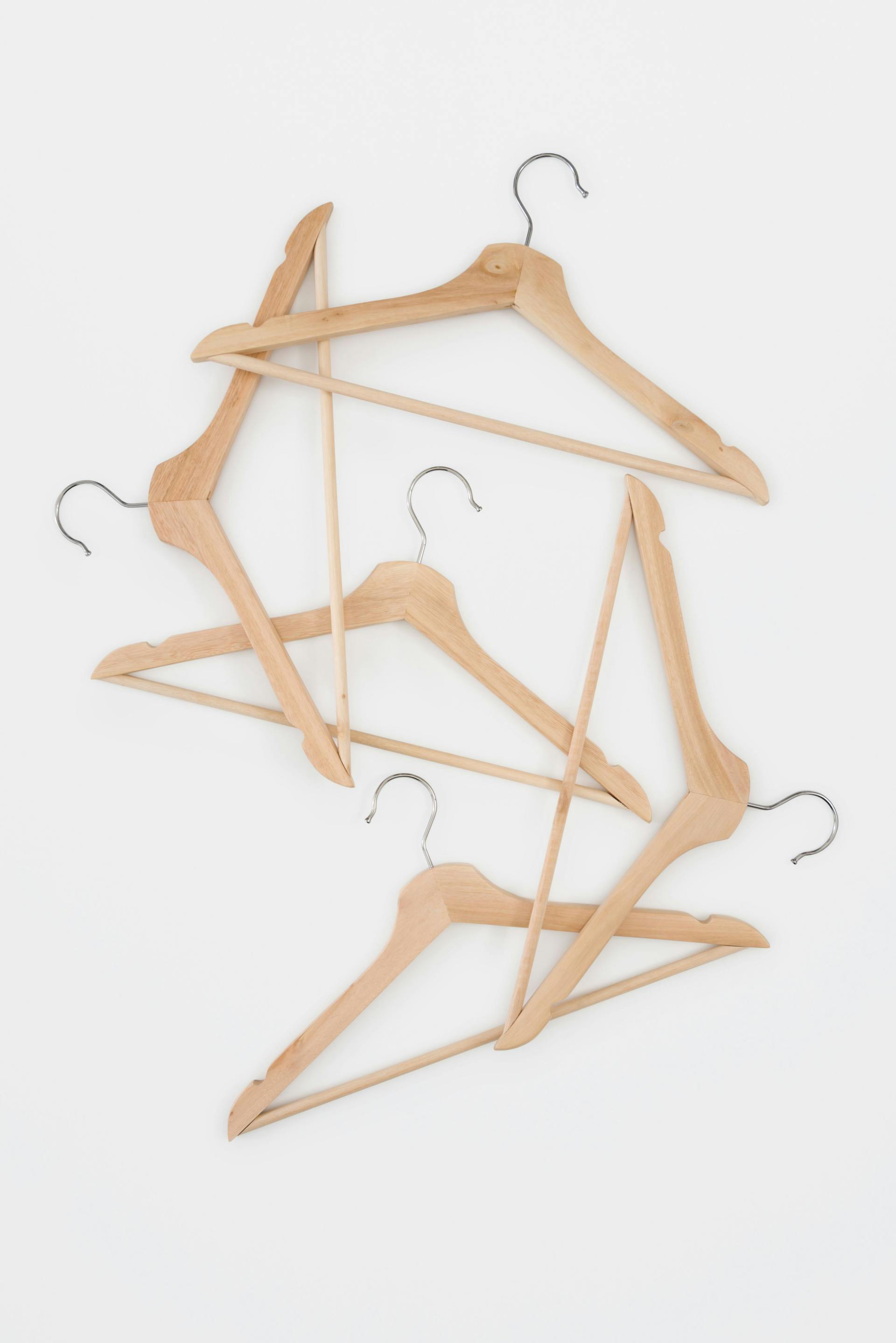
How to Start Your Own Online Clothing Store: Business and Tech Prompts
Have you ever imagined riding a bike through your own clothing store like Jules Ostin from “The Intern”? Or following the success of Anne Hathaway’s character by launching your own eCommerce fashion startup? Well, the idea might be very much worth your while because the apparel market is growing rapidly every year. Maybe you already have a great selling Instagram page, or you are just considering launching one. Our guide will give you advice on how to set up an online clothing store, and show you the bigger picture of what it takes to open it from both business and technical points of view.
Where the Revenue Is
Since the internet and mobile devices make shopping online easier, the eCommerce fashion industry is becoming a profitable market.
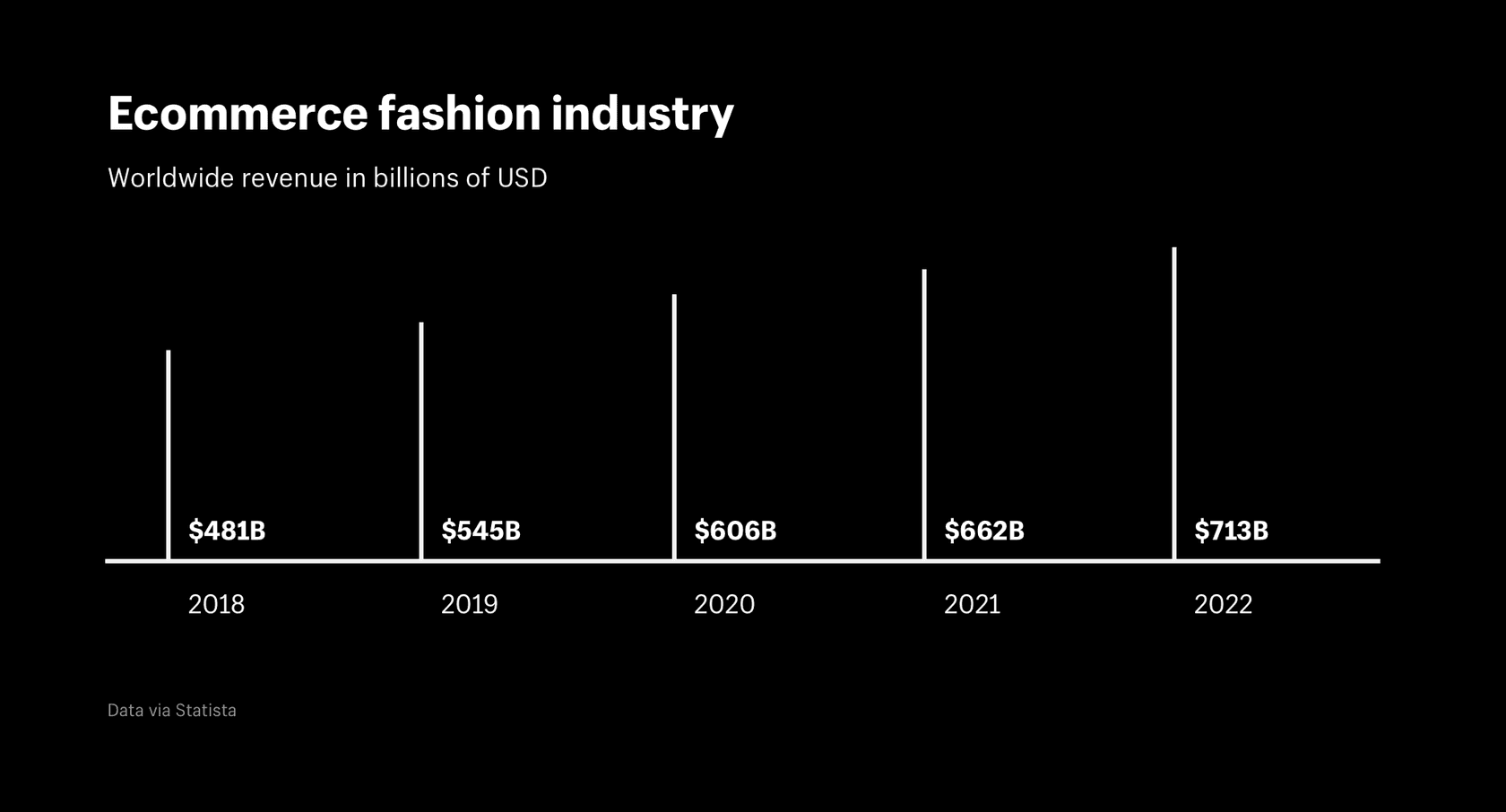
Moreover, the young “tech native” generation is entering the labor market, and will be a driver for digital sales. They prefer shopping online over regular brick-and-mortar stores. Hence, the average revenue per user is increasing gradually.
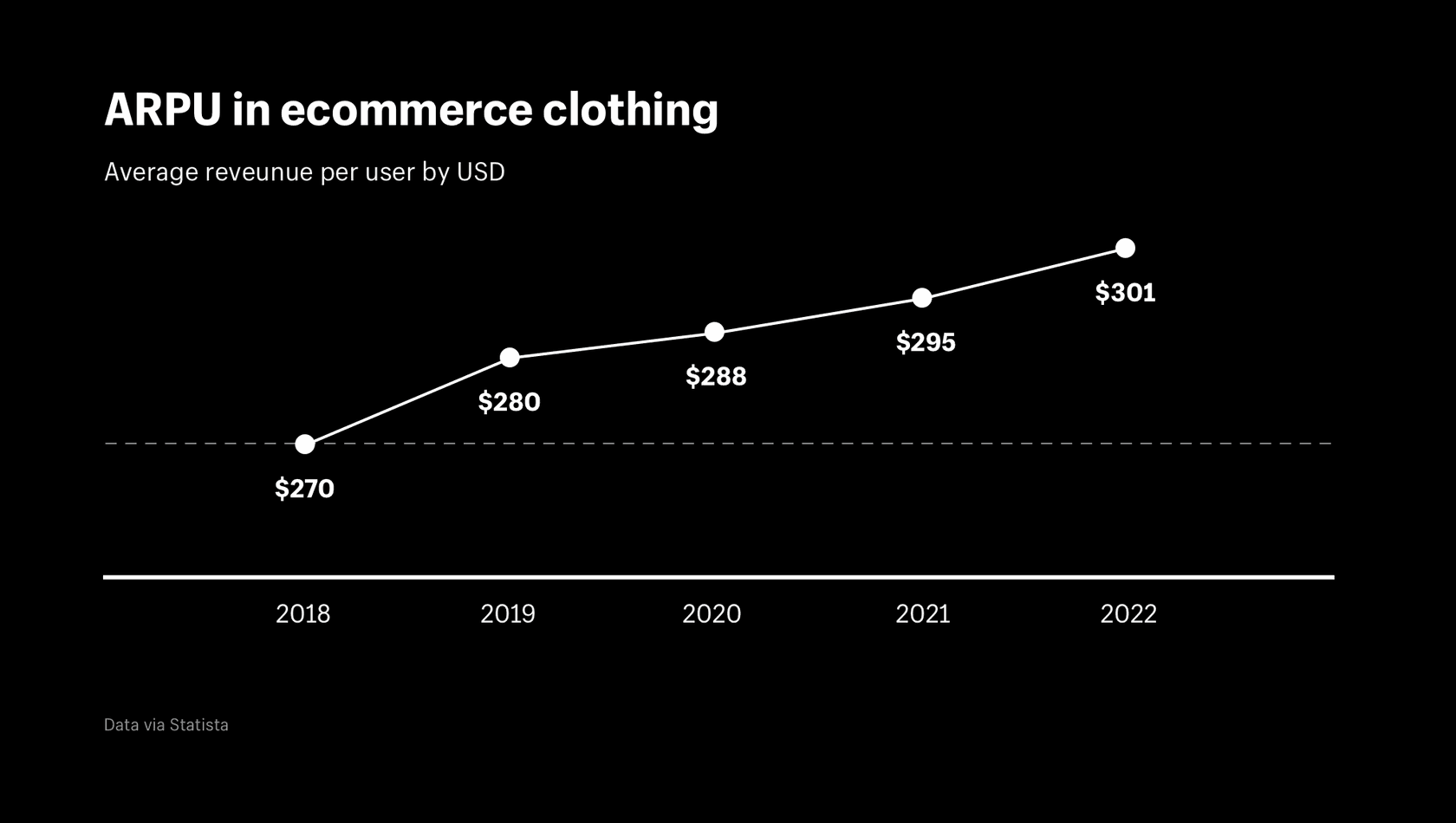
An online shop has no geographical boundaries, and you can have customers from all over the world. Let’s look into the most profitable global markets before starting an online clothing business.
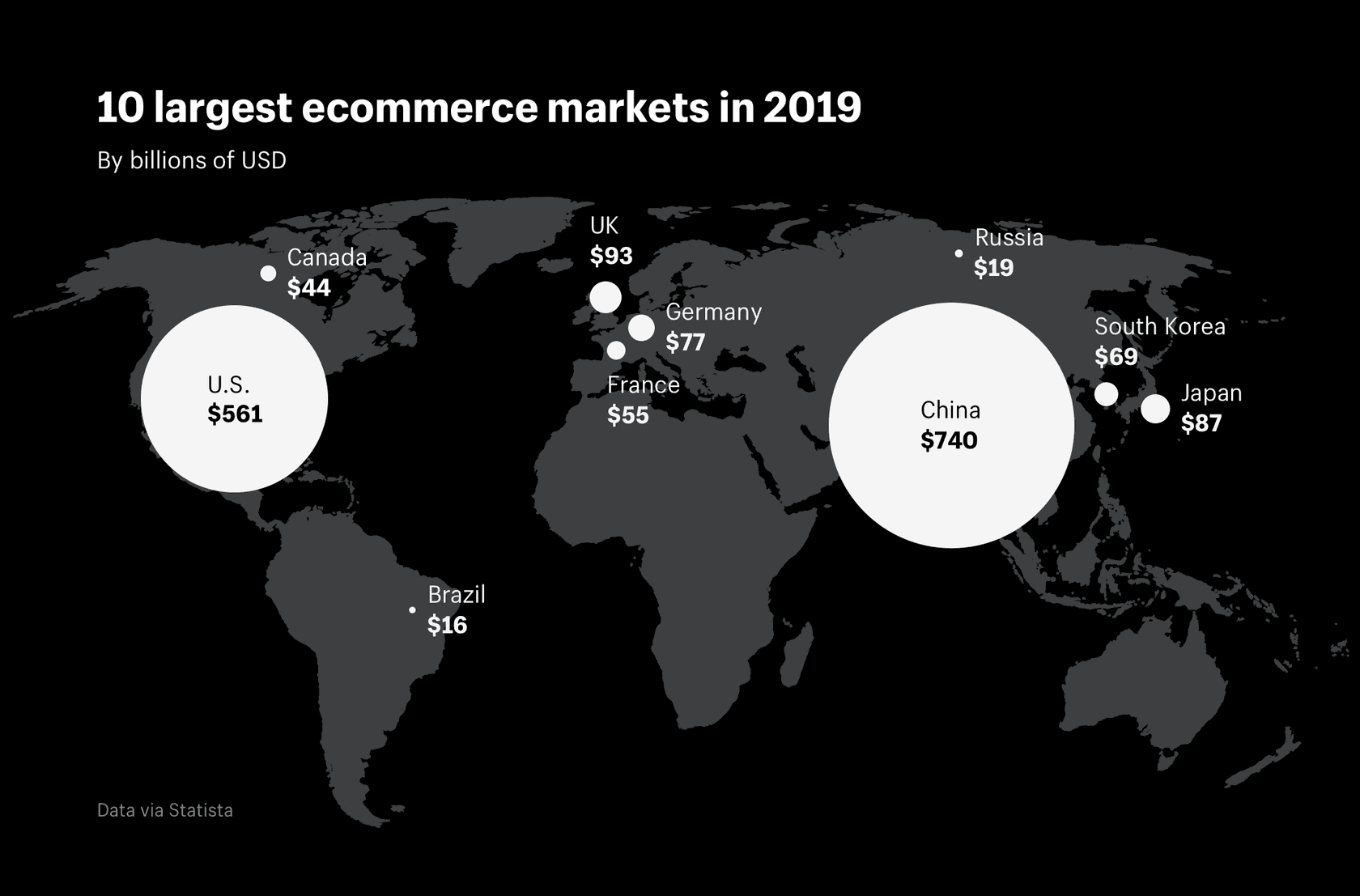
Goals First
Before we dive into the topic of how to make a clothing website, let’s talk business first. From a business point of view, you should start by setting your goals. Creating a clear picture of what you will sell, how and to whom, will affect both your future profits and the necessary technical features.
There are several basic business models for an online clothing store. Print-on-demand is one of the most popular ones. According to Credence Research, the global market for custom t-shirt printing industry is expected to cross $10 bln by 2025. You establish a web page with a design choice, and your customers choose the print and size of the garment.
Another business model, which is in high demand, is dropshipping. You sell the goods by starting an online clothing boutique, but deliver orders from large wholesale distributors. The advantage is that you don’t have to take care of the physical shipment yourself — the clothes are stored at the distributors' warehouses. The disadvantage is that all the resellers might have similar items available on the market. This is especially a problem for women, because they hate wearing clothes that look the same.
The private label business model is a bit more complicated. You purchase the clothes with no brand or label, and then add your own design to it. This makes your goods more unique. However, it takes a lot more effort to produce apparel. You have a prepared basis, and then you change the design according to your creativity and taste. That is what sells the product — uniqueness!
The private label requires less effort than the custom cut-and-sew business model. Here you lead the whole process of clothes creation. Either you create your own style from scratch or elaborate on it together with the client. The process starts from an idea — not a blank but an already made t-shirt. However, you have to create tools that will help customers to place the orders. A short questionnaire or a more complicated feature is required.
Whatever business model you choose, you can see that creating a web site that stands out from the competitors is a must.
Tech Features Aligned
As soon as you have your business goals set, you need to take care of the development process. If you are planning to just launch an Instagram page, you will not be able to process the orders, shipment, etc. Therefore, make a clothing website to unlock a better potential for the growth of your retail business. A united platform for all business processes lets you handle orders faster, keep in touch with the clients, make personalized offers and have a more profitable clothing store eventually. You also can make the web site fully customized to your needs.
Almost every online clothing store has a set of common features:
- Admin panel. This is the system for managing the process of online purchases. It facilitates adding, editing or deleting products, images or categories, and approving, publishing or deleting profiles and comments. It also helps with troubleshooting. The admin panel is one of the core elements of any online store.
- Search bar and filters. This is an indispensable feature for medium and large online clothing stores. If there are many categories, brands or a wide selection of clothes, make it easy for customers to find exactly what they want. Don’t make them spend time browsing unnecessary pages.
- Recommendations. You decide how your store will function internally and visually. It might include a “Facebook likes” plugin, Instagram “hearts”, comments plugin, etc. The feature also can work in a way that when a customer chooses, for example, a shirt, the system may behave as an “internal style consultant” and suggest trousers or a tie complete the outfit.
- Product page. This is the main selling feature of your online clothing store. The way it looks and functions influences the customers choice of making or not making a purchase. You should focus on color, font, photos, text, zoom, shopping cart pop-ups, and payment options.
- Product Customization. If you want to offer clients the option to create their own design or outfit, there should be a special feature for that. This is a must-have option for the custom cut-and-sew and print T-shirts business models.
- User profile. Depending on the type of website, you might create only a client’s profile but if your project is a marketplace like Amazon, you need both buyer and seller profiles. The functionality is different for the two types: the buyer needs an option to save the chosen items and the seller — to fill out the product page.
- Payment processing options. It would be great to have several options to receive money like PayPal, Skrill, Wire Transfer, etc.
When it comes to clothes, the customers worry whether the size of the ordered clothes will fit. You should provide additional information about it, or create a virtual fitting room. People trust and pay to the sellers who care about their needs.
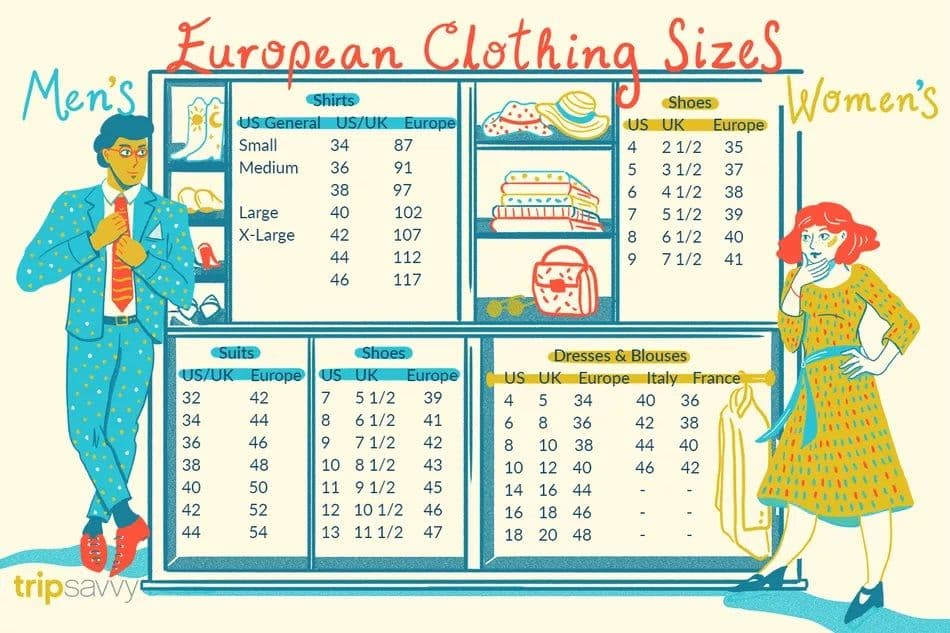
Costs
Even if you choose to use free templates and plugins, there are some costs to be paid. First of all, you will need to buy a domain name and hosting services for your web site. Double-check the reliability of your hosting provider to avoid website breakdowns and ensure that the site will be loading without interference, and that it can handle high user traffic.
You should also take care of the web representation of your products. The first impression is important, therefore you need to design an attractive website, to take care of the overall look of the store, and to make stylish photos. There’s no better way to win the trust of your customers rather than a great look at your clothes in the online shop. Designer services might be expensive, but it is a worthwhile investment.
Development options
A perfect functionality is as important as a stunning design. The development of your web store is another crucial step. There are various options to consider when figuring out how to start an online clothing boutique or a store. You may start with a free tool to build websites. Shopify is one of the most multi-faceted platforms for eCommerce. It includes various themes, ability to create product listings, data tracking tools and to code anything by yourself.
Another great eCommerce solution for starting a clothing website is Volusion. This is a relatively easy-to-use kit, where you can choose from completely free to reasonably priced options. Special plug-ins, a real-time editor, and other useful features make this service one of the most suitable for the beginners.
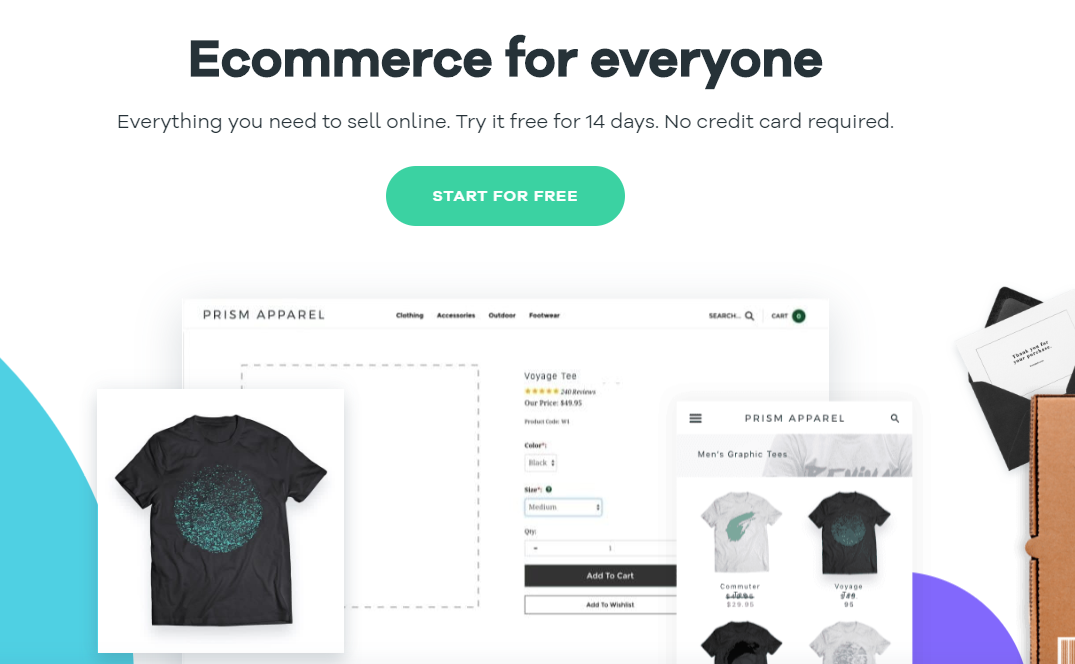
Even though the website builders have various features and options and are relatively cheap, there are some significant drawbacks. The most common are a lack of customizability, security issues, and scaling obstacles. If you are limited with the costs for the development step, you have to settle for the cheaper options. In case you choose a more sophisticated solution, consider the option to build a clothing website from scratch and hire a web development company.
An experienced software development company can save your time and effort. While they work on the technical part of your project, you can focus on your business needs like hiring employees, ordering supplies, marketing, etc.
Some of the agencies have already worked on similar projects and know the ropes of the eCommerce development. They can advise on what kind of app or functionality you need. For example, we at Gearheart, already have experience in creating online clothing store for the US market. Instead of constantly rebuilding the existing semi-free template, the client discusses the desired features with us. We develop the required functionality, improve the customization wizard, and make the whole process of ordering tailored suits smoother. Let us know if you want to achieve success in the clothing business.
Hiring an agency costs more than using the pre-designed templates, but, eventually, you receive exactly what is needed for a prosperous business with considerably less stress, time and effort. You can continue focusing on the targets of your business, and let the agency to take care of the technical part.
Note that some of the agencies do not offer web design services. Check it in advance, whether your potential tech partner provides what you need.
Read more about how to create a peer-to-peer marketplace.
Wrapping Up
Now you have a bigger picture of how to open an online clothing store. It includes both the business and the tech features necessary to launch a successful online clothing store. Here’s a short checklist:
- Define your goals and the fashion segment;
- Choose a business model;
- Invest in design and photography;
- Buy a domain name and hosting;
- Get your tech requests ready;
- Find a website builder that fits your requirements or hire a web development agency;
- Take care of promotional campaigns when designing a web site, so you have customers from the moment of launching your business.
Remember, you need to stand out from the crowd. Nothing can beat a unique and convenient online clothing store.



